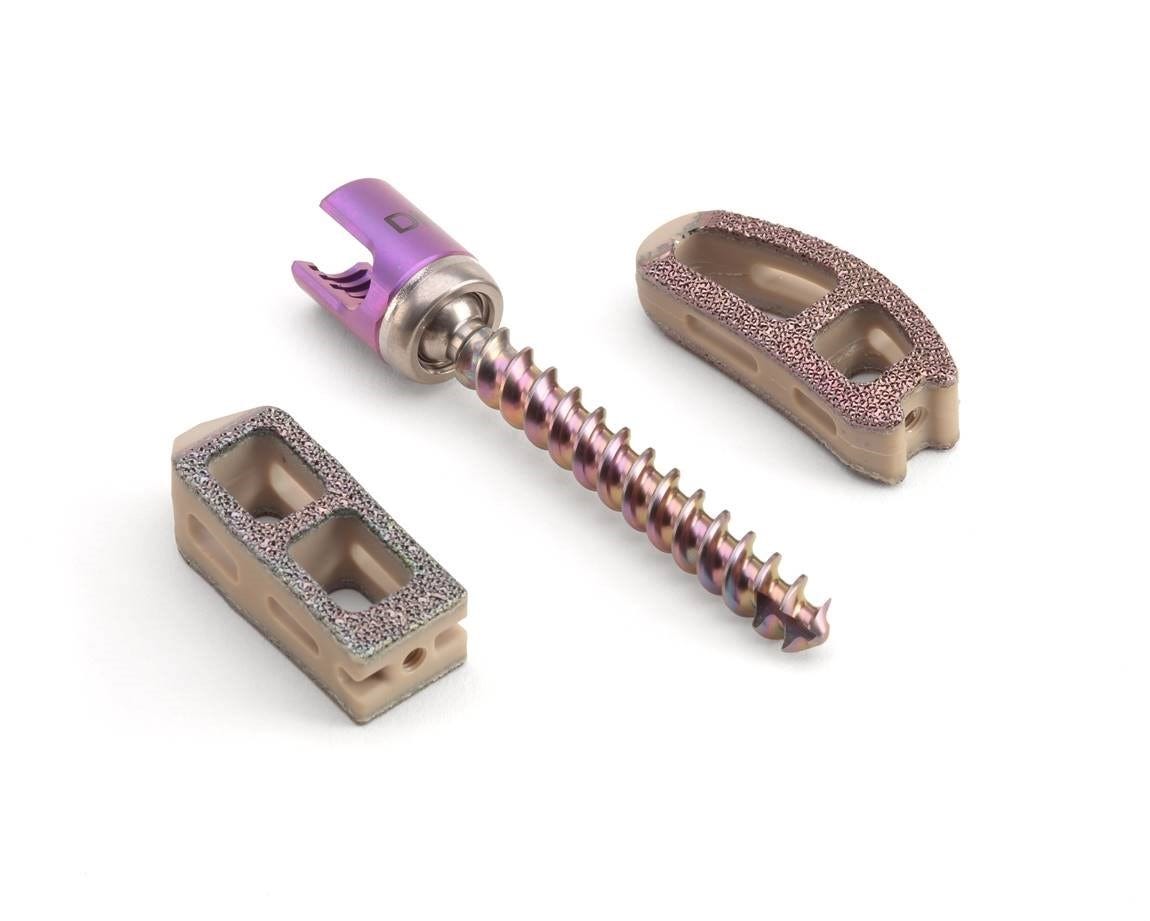Indiana Investors Lead $5.5 Million Boost to Nanovis
 Nanovis makes nanotechnology-enhanced spinal implants.
Nanovis makes nanotechnology-enhanced spinal implants.
Subscriber Benefit
As a subscriber you can listen to articles at work, in the car, or while you work out. Subscribe NowA Carmel-based company that says it makes “superior” spinal implants is celebrating a $5.5 million investment round and preparing to reveal its newest technology. The backbone of Nanovis’ business is nanotechnology—a scale so small it’s nearly incomprehensible; it takes 80,000 nanometers to equal the diameter of a single human hair. Working in this microscopic environment, Nanovis is changing the surface of spinal implants and says the market is taking notice.
“[The funding] allows us to expand in response to the surge in demand, so we can get more of these implants into the hands of surgeons and patients who can benefit from them,” says Nanovis Chief Executive Officer Matt Hedrick.
Founded in 2006, the company specializes in creating spinal implants that are enhanced with nanotechnology; namely, Nanovis alters the surface of its spinal implants to improve fixation, or the process of new bone growing around the implant to hold it permanently in place.
Tissues in the human body are described as “nano rough;” on a nanometer scale, human tissue has uneven, rough surface features. Traditional implants, however, are described as “nano smooth,” lacking the same type of rough surface features found in human tissue; the mismatch between the two surfaces can impede new bone growth. Nanovis says its implants have surface “roughness” that mimics human tissue, which promotes new bone growth.
“There are some spinal procedures with pseudarthrosis rates that can reach up to the 10 or 20 percent range, which is a lot of patients,” says Hedrick. “Pseudarthrosis involves bone not growing where it should have.”
Nanovis says its portfolio of spinal implants has been “very well received,” and the company is now addressing a second major concern with spinal implants: infection. The company’s bactericidal surface technology is designed to prevent infections by killing bacteria that might come into contact with the implant. Hedrick says infections occur in about 8 percent of spinal procedures.
“These are people who are in a lot of pain and some deformed by the condition of the spine—such as scoliosis patients; these are teenage sons or daughters trying to get their spines straightened out, so they can have an improved lifestyle,” says Hedrick. “The last thing you want is for them to get some horrible infection that could be an absolute disaster for them.”
Nanovis believes the recent $5.5 million investment round will help it meet current demand and prepare for future growth and diversification.
“This funding round is instrumental in not only capturing the opportunity we have in front of us with our fixation technologies, but helping us set up the long-term growth driven by our bactericidal technologies,” says Hedrick. “It’s like iPhone’s strategy to keep upgrading iPhones each time; we have a similar strategy with implant technologies. We want to follow up all these fixation implants with an upgrade to bactericidal implants.”
Nanovis says it’s “a big deal” that Indiana investors provided 81 percent of the recent funding round, led by Elevate Ventures. Hedrick believes it showcases Indiana’s strengths in the orthopedic and technology sectors and the state’s ability to support small, innovative companies alongside the corporate giants.
“[The funding] allows us to keep growing here. We have a lot of very smart people who are very hard-working here and a lot of wonderful infrastructure around us in the ortho industry. We like it here, and we want to stay,” says Hedrick. “With our really rapid sales growth, a lot of new product launches and new technology coming up behind those, the next nine months will be one of the best times in Nanovis’ history.”
Hedrick says Nanovis’ fixation and bactericidal technologies are not limited to spinal implants.
Hedrick says Nanovis’ bacteria-fighting technology is increasingly important as more bacteria become resistant to antibiotics.
